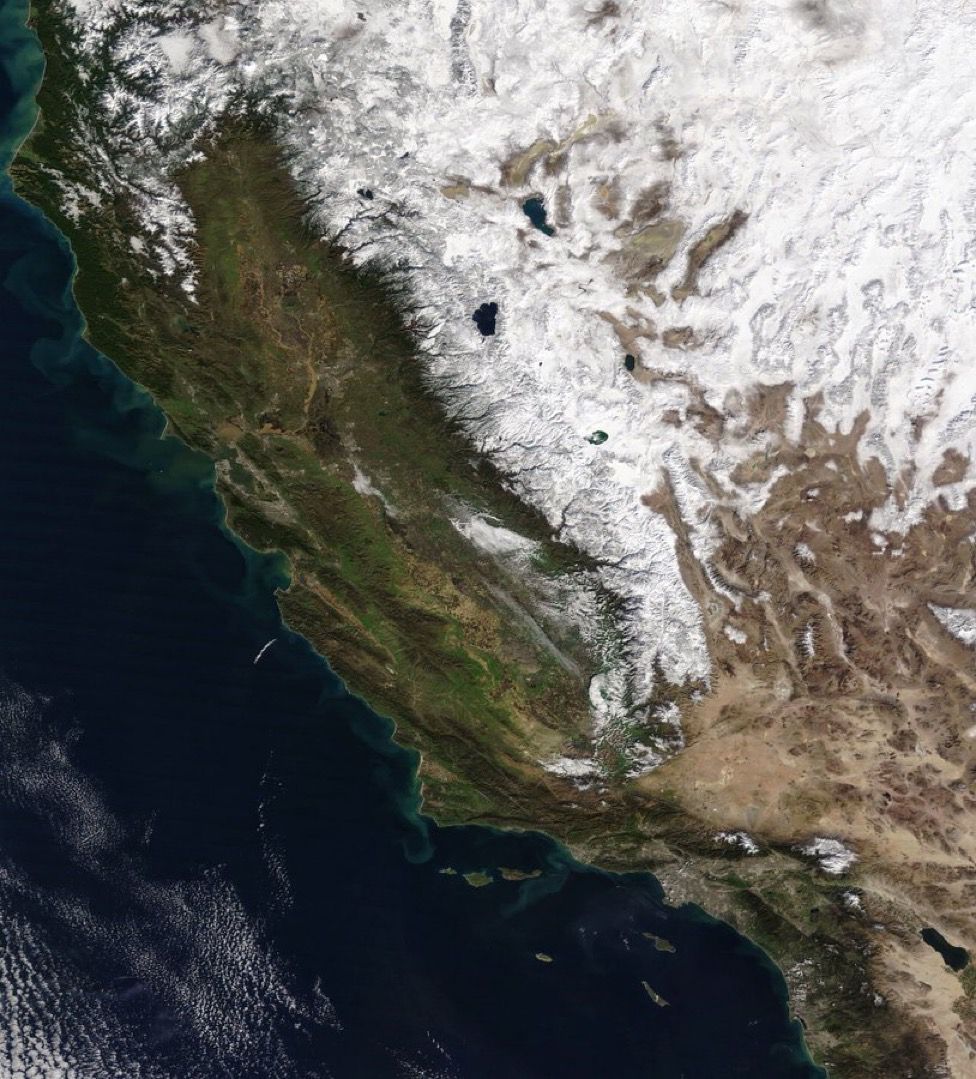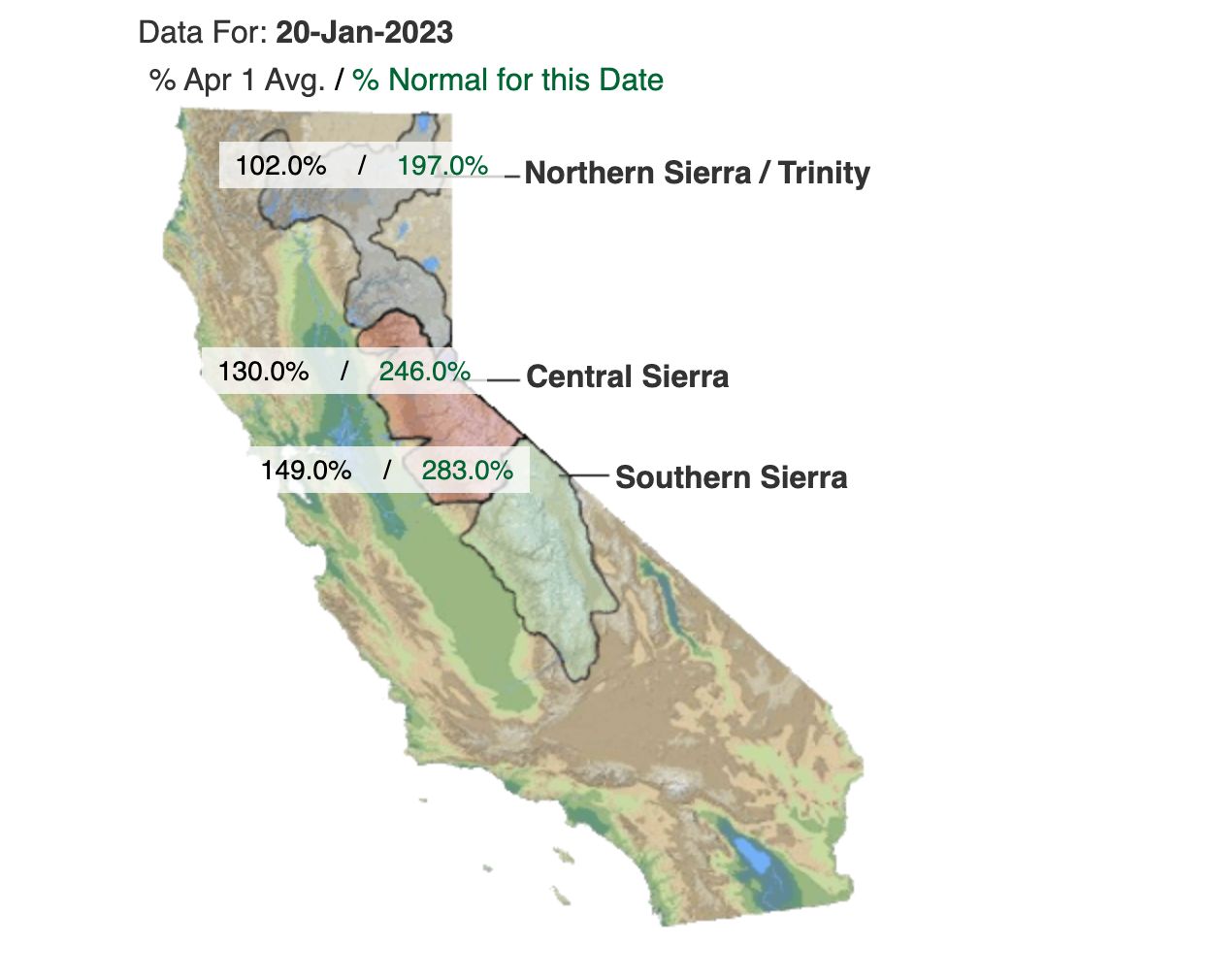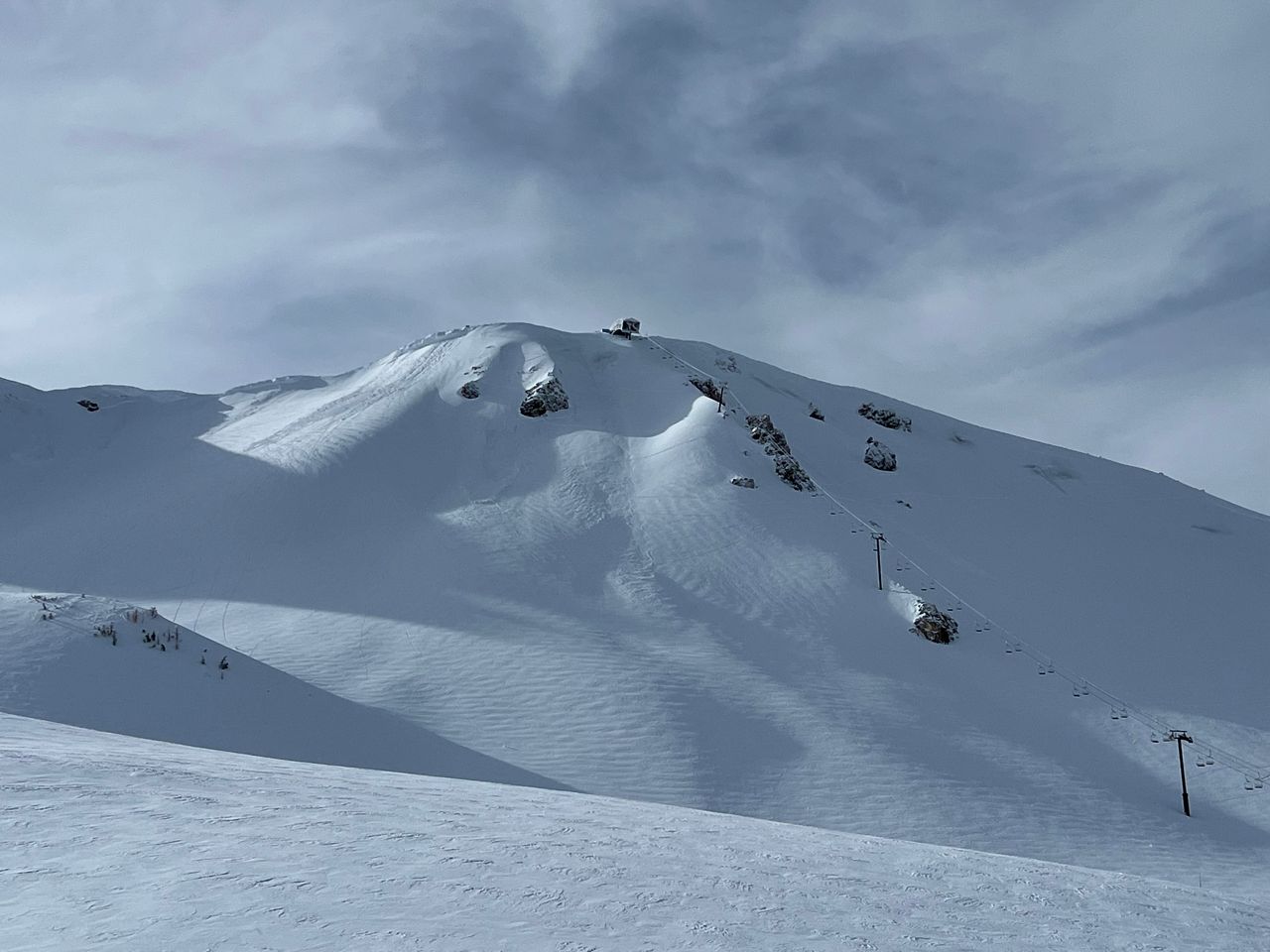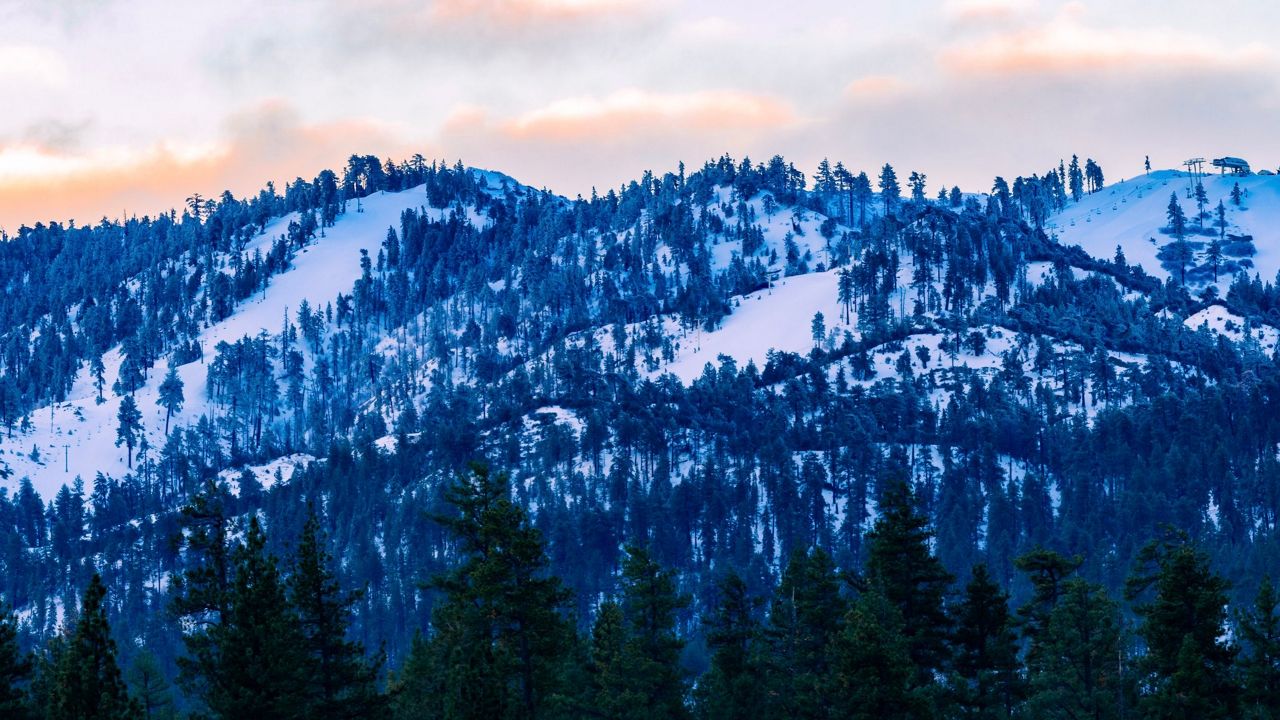For snow lovers, California is the place to be this winter. The series of atmospheric rivers dating back to Dec. 2022 have made a large and record-breaking impact on California’s reservoirs and snowpack.
The Sierra Mountain snowpack is absolutely impressive and can be seen brightly miles away on satellite.

The snowpack of 2023 has already surpassed that of 2022 and is about 124% above the April 1st average, and over 200% above normal.

Even our local mountains, like Big Bear and Snow Valley, have received several inches of fresh powder over the past few weeks. Big Bear’s snow depth as of this weekend is 28-40”.
Mammoth Mountain’s base depth is 178” after receiving a whopping 381” of snow this season.

While snow enthusiasts take advantage of the record-breaking season, what does this mean for water storage?
The state’s water supply is above average for this time of year and will be for the next couple of weeks. This means we can’t go completely dry.
Understanding the snow water equivalent, or how much water is within the new snow, tells researchers how much water they could use once the snow melts in the spring. The storm window needs to remain open in order to keep the healthy snowpack and water levels that we will need for the summer.
Our team of meteorologists dives deep into the science of weather and breaks down timely weather data and information. To view more weather and climate stories, check out our weather blogs section.



